 Opinion
Opinion
Mechanisms of Survival and Resistance of Arthropods to Drought in Marine and Stream Habitats and Possible use of its Survival Mechanism for Human
Hassan Vatandoost1,2*
1Department of Medical Entomology and Vector Control, School of Public Health, Tehran University of Medical Sciences, Tehran, Iran
2Department of Environmental Chemical Pollutants and Pesticides, Institute for Environmental Research, Tehran University of Medical Sciences, Tehran, Iran
Hassan Vatandoost, Department of Medical Entomology and Vector Control, School of Public Health, Tehran University of Medical Sciences, Tehran, Iran.
Received Date: January 15, 2021; Published Date: February 15, 2021
Opinion
Some invertebrates, when severely dehydrated, go into a state of suspended animation in which their metabolisms completely cease. When conditions are right, the insect come back to life. The sleeping fly called Polypedilum vanderplanki belong to the order of Diptera and Family of Chironomidae. They live mainly in Africa (Figure 1).
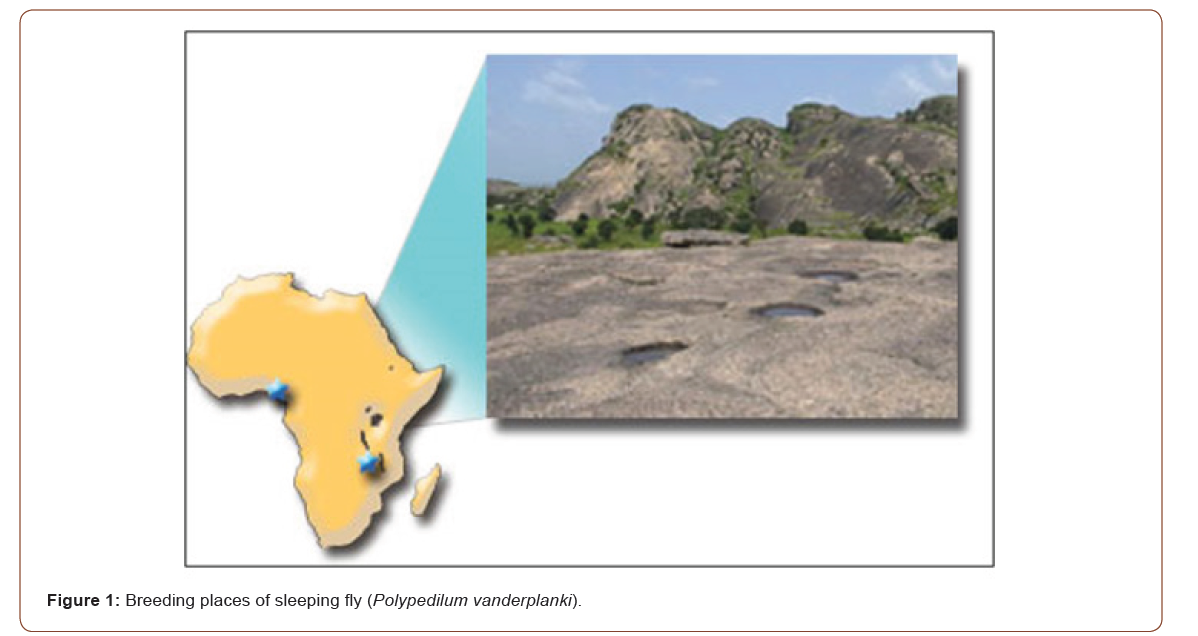
The life cycle of fly includes egg, larvae, pupae and adult (Figure 2). The larvae live in small tubular nests in the mud at the bottom of temporary pools that frequently dry out during the lifetime (Figure 3). The larvae of the African fly (Polypedilum vanderplanki) scrounge a living by eating detritus at the bottom of rain puddles but can survive up to 17 years of drought waiting for the next abundant rains. Figure 4 shows the male and female of this species with short life. Figure 5 shows the larvae of this species before and after sleeping. Since trehalose is the hemolymphatic sugar of insects, it represents 0.5 to 1% of the body lymph in larvae. However, during the process of desiccation, trehalose is rapidly synthesized to reach finally a content of 20% (Figure 6) (Figures 2-6).
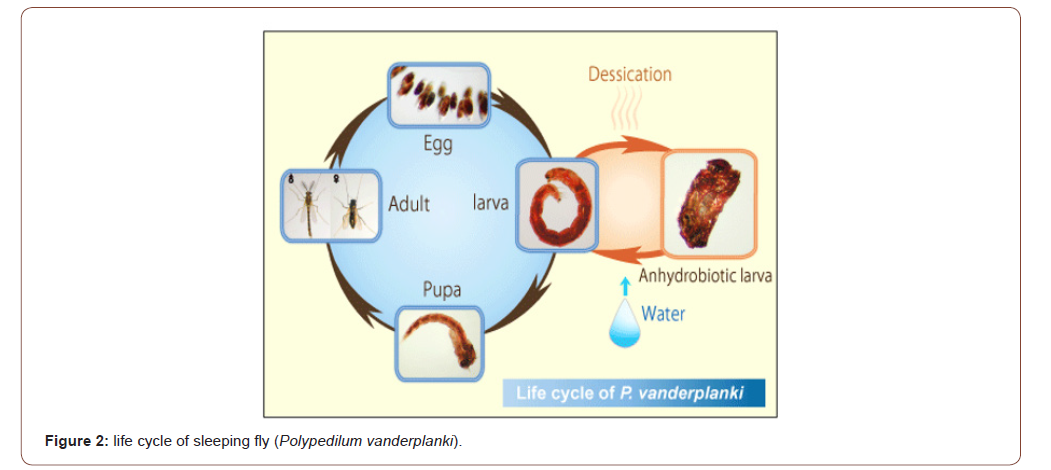

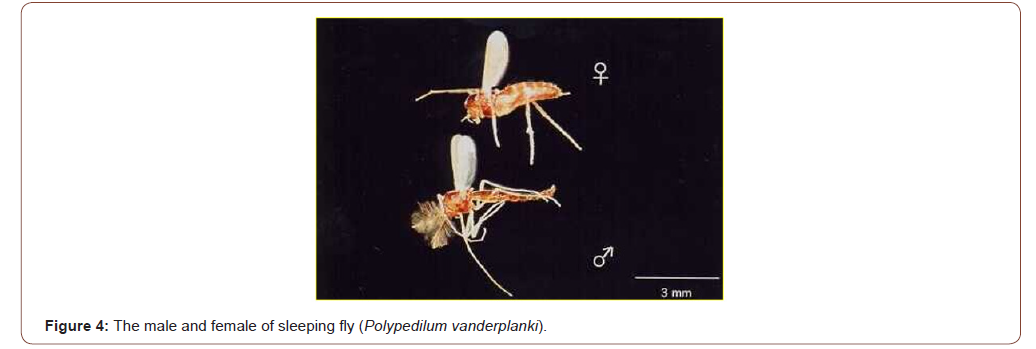
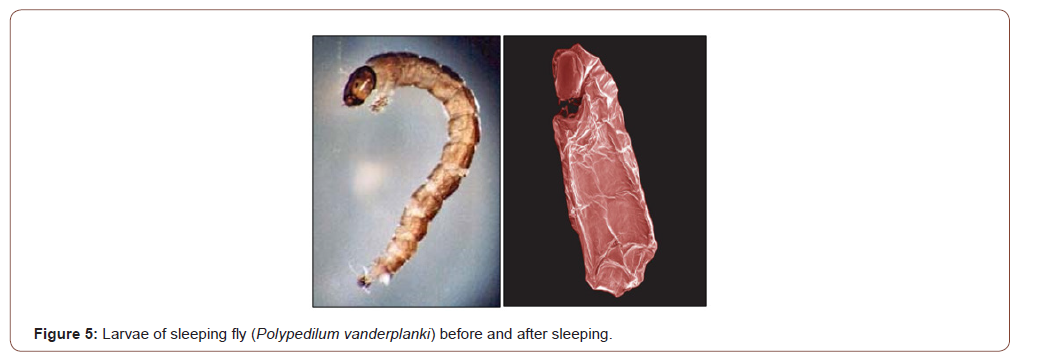
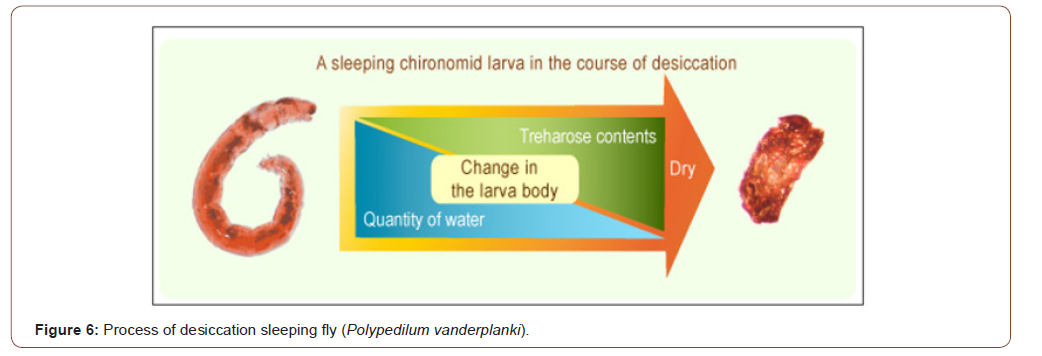
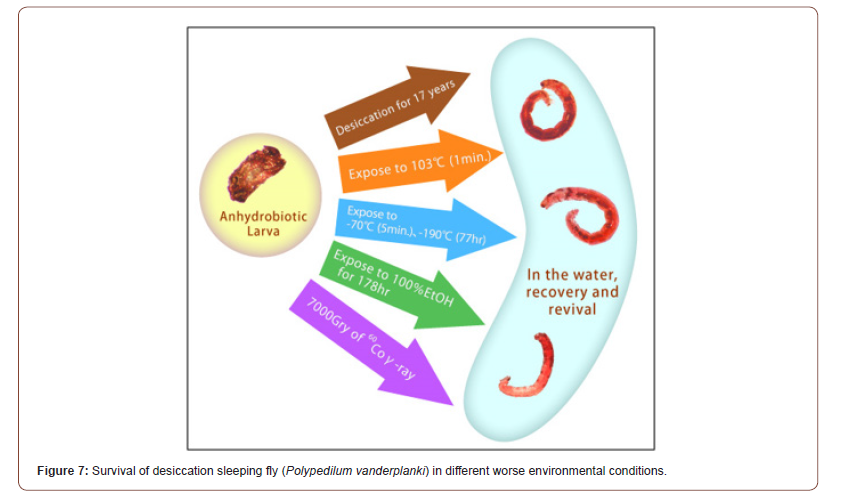
Anhydobiotic larvae can survive for 17 years in desiccation of breeding places. If they expose to 103 degree centigrade for 1 minutes and then they were put in the normal water, they are able to recover. The experiments also showed that exposure to -190 degree centigrade for 77 hours and then expose to normal water, they will recover. In addition, exposure to ethanol 100% for 178 hours doe nor effect on the mortality. Exposure to 7000 Gaba rate also does not effect on its life (Figure 7). The sleeping stage were transferee 400 kilometers from the earth and then put in the water, the recovered (Figure 8). If part of body including head is cut off and during andydobiosis, they transfer to the water, aging they alive, it seems that the nervous system of larvae are in different parts of body (Figure 9). There are Multi-center studies in the world for rearing of species to work on different aspects of its physiology for helping the human in adverse condition for survival (Figures 10,11). The mechanism of andydobiosis in the larvae is expression of specific genes to enhance the contents of trihalose in the body (Figure 12). Study on physiology and habits of this species will help the human to mimics its physiology in extreme and bad condition for survival (Figures7-12).
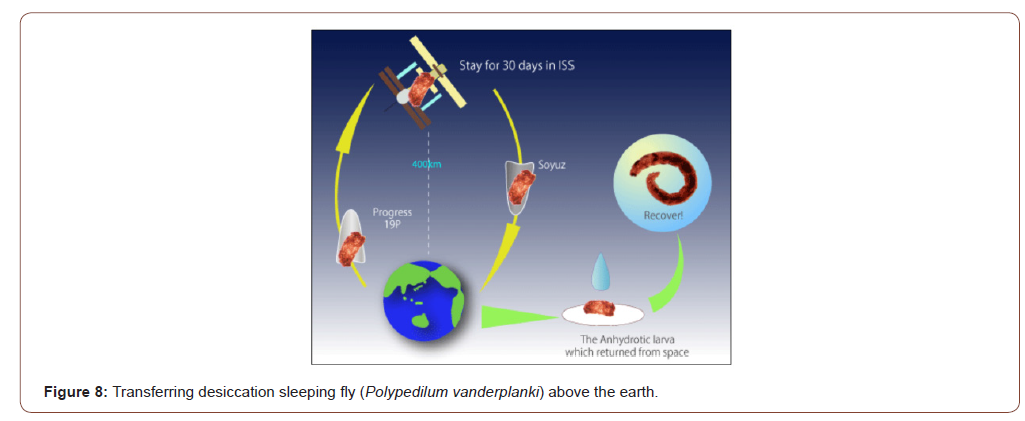



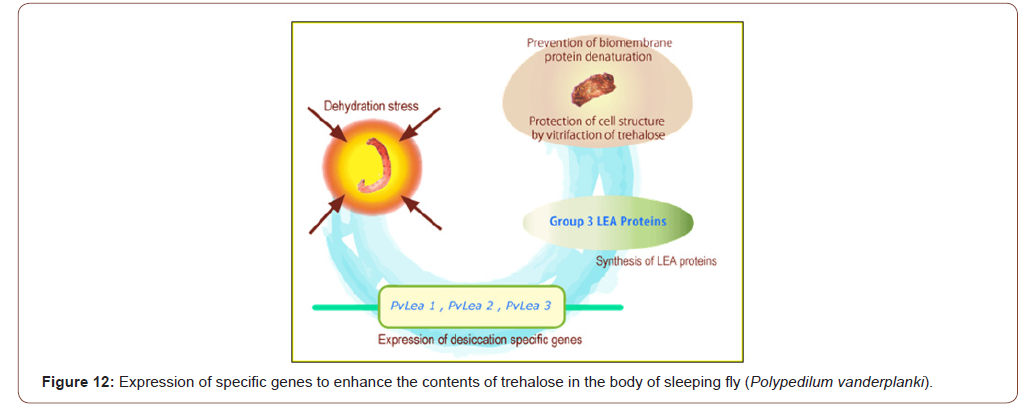
Acknowledgment
None.
Conflicts of Interest
No conflict of interest.
-
Hassan Vatandoost. Mechanisms of Survival and Resistance of Arthropods to Drought in Marine and Stream Habitats and Possible use of its Survival Mechanism for Human. Ad Oceanogr & Marine Biol. 2(4): 2021. AOMB.MS.ID.000542.
-
Arthropods, Marine habitats, Stream habitats, Invertebrates, Anhydobiotic larvae, Physiology, Polypedilum vanderplanki
-

This work is licensed under a Creative Commons Attribution-NonCommercial 4.0 International License.






